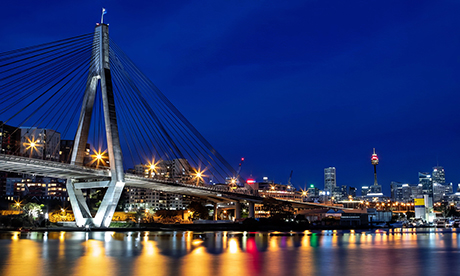James Joyce once described Kingstown Pier as a “disappointed bridge”.
Now known as Dun Laoghaire, it is also where most passenger ships arrive at and leave from Dublin both then and now.
The idea of the Kingstown Pier as a disappointed bridge, unable to go all the way across the Irish Sea, says much about our many journeys.
And for those of us with an Irish background, it also tells of our ancestors who, forced by circumstance, nevertheless had courage to leave home.
Piers take you beyond the restrictions of the coastline.
They offer a different view and, most importantly, some bracing fresh air.
Bridges, on the other hand, take you over obstacles from one side to the other and enable you to continue the journey.
The Second Vatican Council of the mid-1960s could at first be considered a pier, a vantage point from where, leaving the safety of the shore, new visions could be seen.
John XXIII talked of “opening windows”, many of which had been screwed shut for years.
There was excitement in the air, a springtime of expectancy, openness and confidence.
The Council remained no more than a pier for some.
Because of the anxiety, this new vision raised, they sought to make sure the pier never became a bridge.
At the first opportunity, they headed for the safety of the shore.
They seemed to disregard the words found in the Book of Proverbs: “Where there is no vision, the people perish” (29,18).
Kevin Kelly, in his book Fifty years receiving Vatican II, described the Council as “a continuing event” — in other words, a pier becoming a bridge.
That is, it’s still leading us somewhere.
It is a gift that has been given.
- by being who we profess to be, a community brought together through the love of Christ.
- by listening to each others’ story, sensitive to others’ joys and sorrows, being willing to walk awhile in their company; not being afraid.
- by talking with each other, by being with each other and by praying together with sincerity; in that way we make our parish community real, we love one another.
In many ways
Vatican II has remained only a pier;
there is still an urgency
for it to be
transformed into a bridge.
“What is parish”
Too often our view of parish is a blend of motorway service station and imposed obligation.
Where is the outreach?
Where is the living liturgy that goes beyond patterns of words to offer inspiration to the people?
Given the increasing crisis in vocations to the priesthood, one of the crucial discussions we should be having, both priests and people, revolves around just three words — “What is parish?” For only when we have some grasp of what is, after all, a complex structure, can we continue bridge-building.
One thing we easily forget is that, although it has become a convenient construct of organization within a diocese, a parish needs a great deal of effort to make it a living, vital community.
Francis of Assisi, the inspiration of our current Bishop of Rome, directly said to the first friars, “You only know as much as you do!”
A parish of passive attenders falls short of the mark.
Not so long ago, those who shared in the Eucharist knew each other by name, they were “local”. But not necessarily the case today given our increased mobility.
We are often away from our parish home and become visitors in another place sharing their Eucharist, welcome guests at the table of the Lord.
We need to find new ways forward and not be afraid of change.
- Chris McDonnell is a retired headteacher from England and a regular contributor to La Croix International.
- First published in La-Croix International. Republished with permission.
